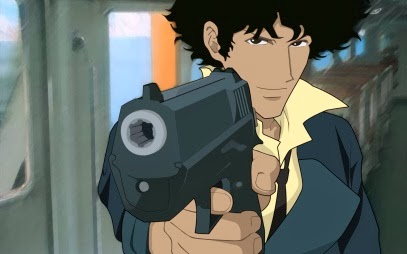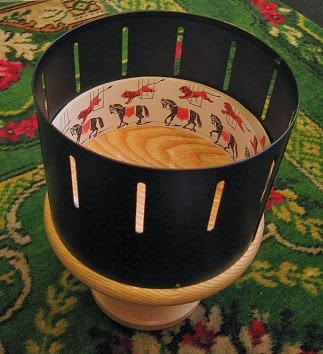What is animation?
Animation is a collection of still images played at 50 frames per second; your
eyes see it as moving because it is so fast. So animation is really an
illusion. Examples of animation companies are Disney, Pixar and DreamWorks.
Disney are the biggest animation company, animation is it’s used in cartoons like the Simpsons
and family guy. Animation has been round for a long time the first animation
device was the ‘Zoetrope’ created by William Horner, It was a circle of paper
with drawings next to each other, it would be placed inside of a wooden circle
that had small gaps where you would look through then you would spin it round
and it would create the effect of the pictures moving. The use of animation
today is usually in anime’s and in cartoons, popular anime’s are cowboy bebop
and bleach, anime’s are usually more 2D than 3D, although some popular
animations, use clay models, like Wallace and Gromit, this uses clay models
that they will move slightly and then take a picture and repeat, then put the
pictures in order and play them at a high frame rate so it creates a full
animation. Many people have been trying to make motion picture for a long time,
although most of the early efforts either didn’t work and when they got more
advanced they didn’t have sound , only fairly recently has sound been
incorporated into animations.

 Animations are used in many different
places, most of the basic animation will be used on websites and advertisement
targeting potential customers on the internet or using advertisements on TV for
people at home. You can also see cartoons and anime’s on the internet and the
TV they’re very popular and can create a lot of revenue and have a huge fan
base if they’re advertised well, the Simpsons has been on air for over 20 years
and still has a large fan base. Anime’s fan bases are usually a lot smaller as
they have a very different style of animation to the Simpsons or a regular
cartoon, anime’s are usually quite graphic and look more hand drawn and a lot
less polished than a popular cartoon.
Animations are used in many different
places, most of the basic animation will be used on websites and advertisement
targeting potential customers on the internet or using advertisements on TV for
people at home. You can also see cartoons and anime’s on the internet and the
TV they’re very popular and can create a lot of revenue and have a huge fan
base if they’re advertised well, the Simpsons has been on air for over 20 years
and still has a large fan base. Anime’s fan bases are usually a lot smaller as
they have a very different style of animation to the Simpsons or a regular
cartoon, anime’s are usually quite graphic and look more hand drawn and a lot
less polished than a popular cartoon.
The biggest pioneers of animation are Walt Disney, Thomas Edison, William
Horner and the Lumière brothers.
Walt Disney was born in 1901, and created one of the biggest animation
company’s in the world, Disney is probably most famous for creating Mickey
Mouse who he did the original voice for, up until 1947. The Disney Corporation
created films like, The Lion King and Aladdin these were animated films that
were extremely popular when they were released. Thomas Edison is famous in animation
because of his phonograph and kinetoscope, the phonograph was a device used to
record and reproduce sound and is now a turntable and record, the kinetoscope
was a device that was used to watch films, through a peephole, it created a
film by many pictures being on a strip of perforated film with a high speed
shutter. William Horner created the zoetrope in 1834, the zoetrope is an
invention that was a circular disc with pictures on and small slits that you
would look through, when span it would create an illusion that looks like the
pictures were moving. The Lumiere brothers are famous for creating the film
camera, which they called the cinematograph this was a wooden box with a hand
crank on the side, the way it worked was they would have a reel of film they
would shine a light out of the hole on the box and hand crank the film through
the box, when it passed through the light it projected it onto the wall,
allowing large groups of people to watch it at the same time which was a step
up from Edison’s kinetoscope. Eadweard Muybridge also invented the
zoopraxiscope which was pretty much an early version of a projector, the images
which were on glass would be projected using the light from a lantern, this
produced a continuous moving images. He visited Edison to try and use his
phonograph in conjunction with the zoopraxiscope, but Edison declined as he
thought it was inefficient.

When making an animation I achieved motion by first, using a
text tool to add the number one, then I made it the size and font I wanted then
aligned it to the middle of the stage, I broke the number apart, then I added a
new key frame at frame 20, deleted the number one and replaced it with number
two, which was the same font and size and then broke the number two apart, I
then created a shape tween between the two key frames which made the one morph
into a two, this means there is 20 still images in this animation, which are
all used to make the 1 morph into a 2 smoothly. This is quite a simple
animation.
Frame by frame is what is making the animation, if you have
a key frame at 0 and a key frame at 20, then there is 20 frames in the
animation, every frame will have something on it unless it is a break in the
animation, you will just have a blank page, the more frames there are the
smoother the animation is, but also, slow motion is hundreds to thousands of
frames, as there is not much change between each frame. Also old fashioned film
reels, if you look at the film reels they were many frames on special film that
when a light was shone on and it was moved at the right speed created a movie.
There are different types of frames, key frames which on programs are black
circles and are mainly used for changing the contents of a frame and there is a
blank key frame which is represented with a white circle.
Tweening is used to
change the motion of an object over different frames; the things it changes are
usually shapes, text and editable objects. Tweening in flash is used to morph
one object into another, a square into a circle, or a number one into a number
two. When you are making a frame by frame animation, if you had to do every
single frame it would take very long and would be very tedious, if you want to
make a smooth animation shape tweening is what you should use as it takes much
less time.
Masking is used in animation when you want something to go
over a word, like the word water could have a water reflection style animation
on it. You need a word and a bitmap picture of water and you would set it to a
continuous loop. This makes it more appealing to the people viewing it.it is
done by creating a shape that you will overlay onto the picture you have
chosen, then you will create different key frames where you want the mask to
move to then you can put more frames in between these key frames to make the
animation more smooth.

 Beta Movement – Beta movement is an
optical illusion, the illusion is that fixed images appear to move when of
course they are not, it is similar to animation, the images don’t change but
are changed quicker than the human eye can see, this is because the human optic
nerve responds to changes at about 10 cycles per second, so when something is
double this speed, we perceive it as moving. The experiment of beta movement
involved a viewer watching a screen, then the experimenter projected two images
in succession, the first image was a ball on the left hand side of the frame,
then the second frame had a ball on the right hand side of the frame. In the
experiment the pictures were held steady then switched between the two frames,
the experimenter then asked the people what they saw, the answers varied
between different people.
Beta Movement – Beta movement is an
optical illusion, the illusion is that fixed images appear to move when of
course they are not, it is similar to animation, the images don’t change but
are changed quicker than the human eye can see, this is because the human optic
nerve responds to changes at about 10 cycles per second, so when something is
double this speed, we perceive it as moving. The experiment of beta movement
involved a viewer watching a screen, then the experimenter projected two images
in succession, the first image was a ball on the left hand side of the frame,
then the second frame had a ball on the right hand side of the frame. In the
experiment the pictures were held steady then switched between the two frames,
the experimenter then asked the people what they saw, the answers varied
between different people.  Uncanny
Valley – Uncanny valley is a hypothesis in the field of human aesthetics, what
it means is when a non-living robot has very realistic human features and human
like movements, it can cause some people to be revolted by the human-like
robots, the term was firstly used by Masahiro Mori, “The Valley” refers to the dip in the graph, the graph is
representing the comfort level of humans when looking at the likeliness of the
robot compared to humans. An animation short called “Tin toy” was one of the
first animations that made people take the uncanny valleys seriously because
the animated baby in the animation made people feel uneasy. When creating a
robot humanoid people need to be aware about the uncanny valley and should
think about how people will react to it.
Uncanny
Valley – Uncanny valley is a hypothesis in the field of human aesthetics, what
it means is when a non-living robot has very realistic human features and human
like movements, it can cause some people to be revolted by the human-like
robots, the term was firstly used by Masahiro Mori, “The Valley” refers to the dip in the graph, the graph is
representing the comfort level of humans when looking at the likeliness of the
robot compared to humans. An animation short called “Tin toy” was one of the
first animations that made people take the uncanny valleys seriously because
the animated baby in the animation made people feel uneasy. When creating a
robot humanoid people need to be aware about the uncanny valley and should
think about how people will react to it.






